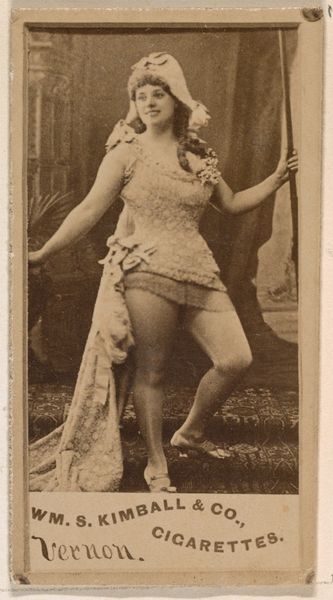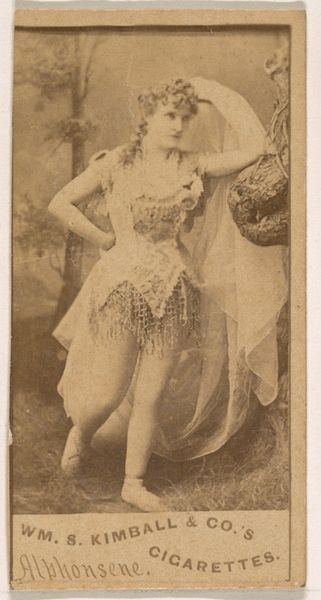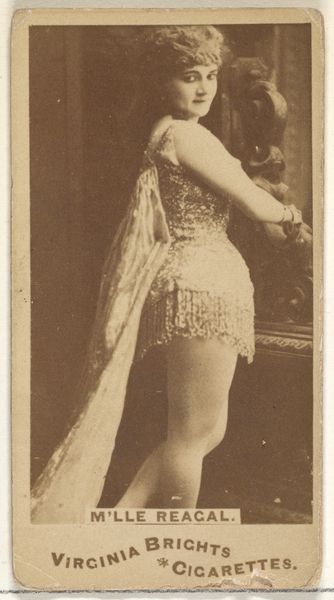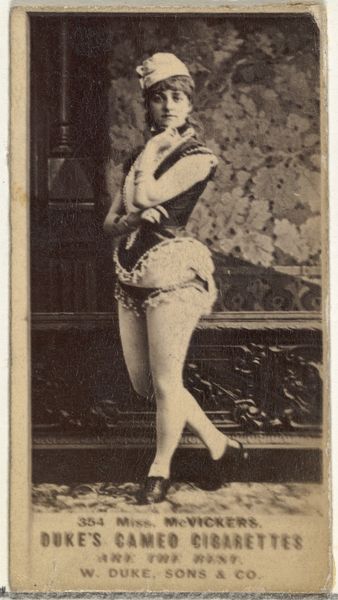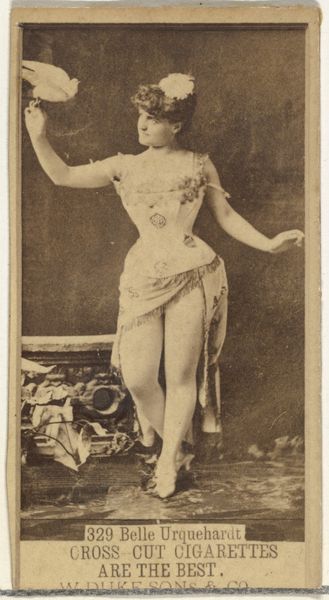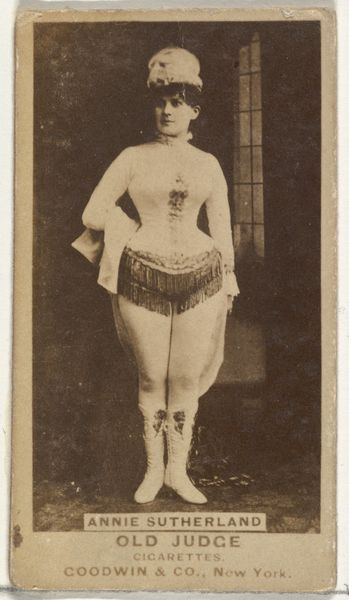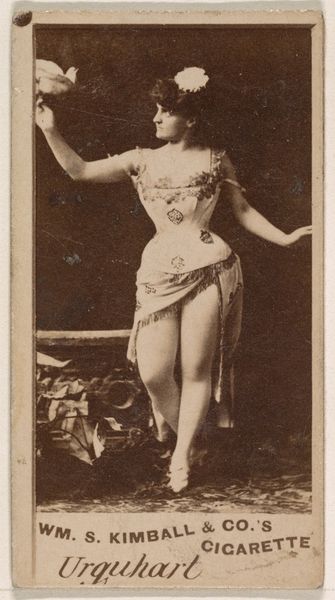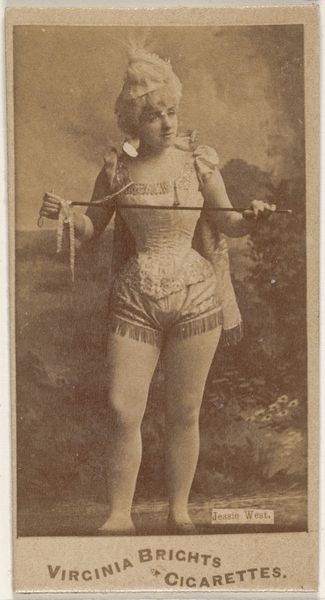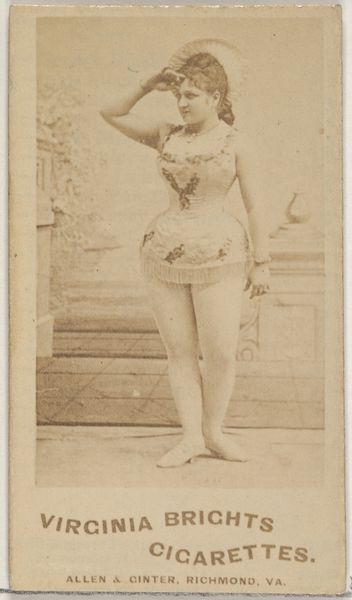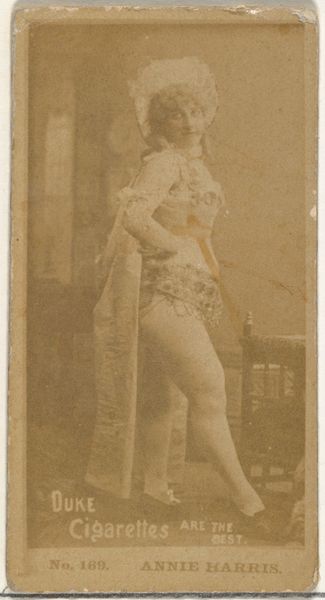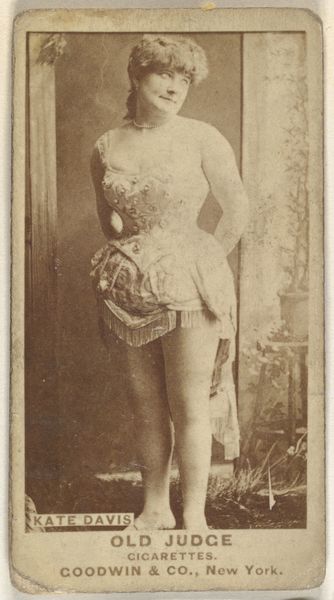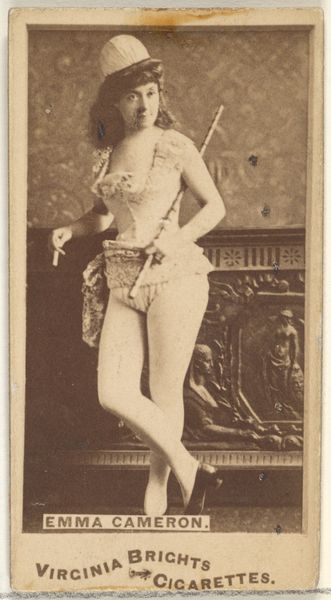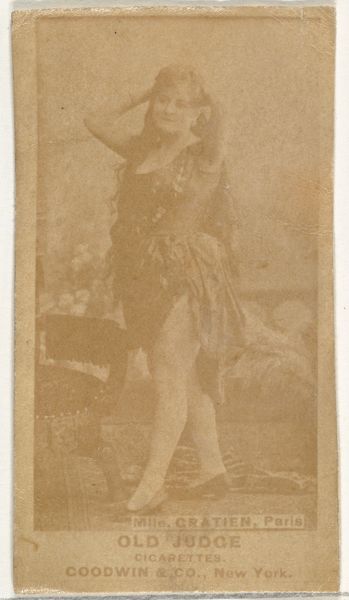
Harriett Vernon, from the Actresses series (N245) issued by Kinney Brothers to promote Sweet Caporal Cigarettes 1890
0:00
0:00
drawing, print, photography
#
portrait
#
drawing
# print
#
photography
#
nude
Dimensions: Sheet: 2 1/2 × 1 7/16 in. (6.4 × 3.7 cm)
Copyright: Public Domain
Curator: The subject of this captivating photograph, dating back to 1890, is Harriett Vernon. It was part of the "Actresses" series, N245, issued by Kinney Brothers to promote Sweet Caporal Cigarettes. Editor: My immediate impression is one of faded glamour. It possesses a tactile quality despite being a reproduction; you sense the layering of textiles, the weight of the feathered adornments and the slight griminess of the aged cardstock. Curator: Precisely! As a promotional item, this small print, now residing at the Met, speaks volumes about the manufacturing and circulation of images during this era. The Kinney Brothers mass-produced these to build brand recognition. Think about the paper stock itself, the inks used for printing, and the labor involved. It collapses distinctions of fine art with this almost proletarian utility. Editor: I am particularly drawn to the symbolic layers here. The costuming, which seems so flamboyant at first, points to performance, to constructed identity. The fact that it's tied to cigarette promotion is quite telling too – a connection between allure, theatricality, and consumption. What kind of image was the company trying to make by attaching this kind of performer to the cigarettes? Curator: I find it fascinating how photography became so integrated into commercial activities, using figures like Harriett Vernon. Photography’s accessibility meant images could move beyond studios and gallery spaces, touching the hands of the consumer. I wonder what was involved in setting up that pose and if the costume was Harriett’s own, or maybe was provided for her? How many pictures would they have taken to mass-produce this and create a large print run? Editor: There is this tension, I feel, between objectification and a sort of implied agency. She's clearly meant to be eye-catching, to sell cigarettes, but there is also a sense of her controlling her own image within that context, creating a persona through visual symbols. Is that hand extended in welcome, or perhaps signaling some rejection of the camera’s intrusive gaze? Curator: Those layers of commerce, performance and celebrity—all constructed within very specific industrial processes of making images—really blur the boundaries, and allow us to reflect on that image making, and consumption. It also enables us to revisit a long-forgotten figure. Editor: Indeed. Considering the blend of commerce and theater helps unlock its complexity; an almost paradoxical union of spectacle and advertisement, image and industry.
Comments
No comments
Be the first to comment and join the conversation on the ultimate creative platform.
